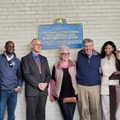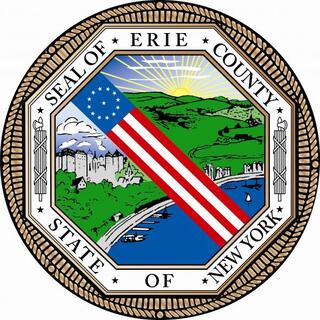The quaint disheveled wooden house pictured here in the 1930s was the last surviving unit of a group of four connected wooden houses that were built one hundred years earlier. It stood at 172 East Eagle Street near Michigan. The high basement timber-frame building with irregular clapboarding, wood shingles, and a massive brick chimney is an image of Americana. Next the basement doorway is a striped wooden barber pole. David R. Yancy, a barber, last owned the house. It was demolished in the 1940s.
In the second half of the 19th century this was the home of Sara M. Hinson (1841-1926), a 4th grade Buffalo school teacher at Public School #31 on Emslie Street near William. Sara eventually became principal of the school. In 1891, while she was living in this house, Sara Hinson was instrumental in organizing one of the first observances of Flag Day. It was held on June 14 to commemorate the date June 14, 1777, on which the American Continental Congress adopted the Stars and Stripes. It was the same date that the first Flag Day celebration was held at the Betsy Ross House in Philadelphia. Years later, in 1916, Flag Day was officially observed by President Woodrow Wilson.
The Sara Hinson monument in Buffalo’s Forest Lawn Cemetery is easily identifiable. It is located at the base of the only flagpole in the Mirror Lake section.












